When you start a small business, you often have to step outside your comfort zone. You know your core business inside and out. But launching a brand requires you to take on other tasks, like marketing, that may feel foreign and, frankly, intimidating.
Creating a small business logo is one of the earliest and most crucial marketing decisions you’ll make. And for those small business owners who aren’t designers by trade, there are two ways to approach the task.
One is to hire a graphic designer. These professionals understand the ins and outs of color, fonts, proportion, and other design theories that help them effortlessly create a clean, effective logo. Other business owners opt to go it alone, relying on design tools to help them craft their logo.
Regardless of the path you choose, this guide can help. You’ll get a primer on logo design—what it is, why it matters, and basic design principles and tools to inform your process.
Contents
- Why is a small business logo important?
- Elements of a great small business logo
- How to create a small business logo
- Small business logo templates
Why create a small business logo?
Humans are wired to process visual information. Our brains process images 60,000 times faster than text, and 90% of information transmitted to the brain is visual.
If you want your brand to become instantly recognizable to your audience, you need a logo.
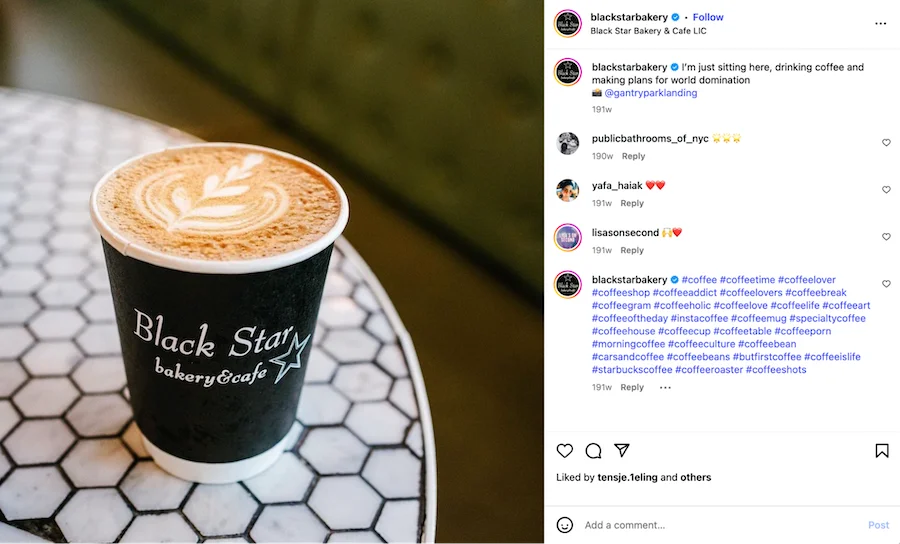
When you see a black coffee cup on the streets near this cafe, you know immediately it came from Black Star.
As your logo becomes more familiar to your audience, it becomes like a familiar face in a crowd—an instantly recognizable presence, and a source of comfort whenever they see it.
If you’ve ever sighed with relief when, hours into a road trip, you spot golden arches in the distance and know a Big Mac is in your future, then you’ve felt this firsthand.
Here are some more stats that speak to the importance of a small business logo:
- People need to see something at least seven times before recalling it. Having a logo to include in all corners of your business will help your customers recall you later.
- 59% of shoppers prefer to buy from recognizable brands.
- The consistent presentation of a brand can increase sales by 23%.
- 30% of Americans notice the logo first when evaluating a business’s product or service.
- 50% of consumers are more likely to shop from a brand with a recognizable logo, and 60% would avoid brands that have odd or unappealing logo designs.
Elements of a great small business logo
Of course, a small business logo is more than a randomly selected image. It’s a carefully designed icon that clearly represents your brand.
Successful small business logos should:
- Include your business name in a legible font. While huge, established brands may get away with an icon-based logo (the Nike swoosh, the Apple apple), a smaller brand should incorporate its name.
- Be memorable. Consumers have a hard time remembering logos that are bland or overly complicated.
- Be relevant. Another thing that can make your logo hard to remember? It’s not clearly connected to your business. Make sure your design has a discernible tie-in to your work.
- Be simple. Your logo must be legible and recognizable from near or far.
- Incorporate your brand colors and fonts. If you’ve already established colors and fonts for your business, use them in your logo. This is how you set a consistent brand identity.
- Be timeless. You’re building a business with longevity; you want your logo to go the distance with you. Designing something that’s too “of the moment” will lead your logo to become stale or outdated.
🌱 Download our free, editable growth strategy template to walk through seven simple steps for creating the right plan to grow your business.
Steps to create a small business logo
Feeling amped to create your own logo, or ready to hire a pro to tackle the project for you? Either way, these steps can guide the process.
Learn the basics about representing your brand visually, so you can have more informed conversations with your professional graphic designer or apply them yourself.
1. Know your brand identity
In order to represent your brand visually, you must know how to articulate your brand identity.
Defining it starts with answering two simple questions: “What do we do, and why do we do it?”
This question will lead you to your brand’s mission statement, which encompasses how, what, and why you do your work. This can include tangible and intangible benefits for your customers.
For example, a test prep business might literally help students perform better on their SATs. But it also helps them feel more confident on test day. And when that confidence contributes to higher scores, they gain access to more opportunities in higher education.

This colorful logo makes test prep look exciting—like an opportunity to expand one’s mind.
Your brand’s mission will help you home in on other elements of your identity. If your test prep company wants to inspire confidence in its students, then your identity might be that of an enthusiastic coach or an encouraging older sibling.
Finally, consider your brand identity in contrast with your competitors. How does the work you do (and the way you do it) stand out from what they do?
🎉 Need help articulating what makes your business special? Get the guide >> How to Create a Unique Value Proposition From the Ground Up
2. Look to other brands for inspiration
Once you have a handle on your brand identity, you can look outward. How do brands you admire represent their identities visually through their logos?
There’s plenty of inspiration to pull from multinational brands with instantly recognizable logos. How does a well-designed logo convey feelings or values through design?
For example, the Nike swoosh is an abstract shape. But it mimics a checkmark and implies upward motion. It is simple and bold, which conveys grace and confidence. These are all attributes that help an athlete shine on the court or field, which ties directly into Nike’s mission of empowering athletes to “Just do it.”
You can also consider logos from smaller brands you admire. Looking to your peers can help you identify themes that resonate with your audience, or you may spot a visual white space your logo can fill.
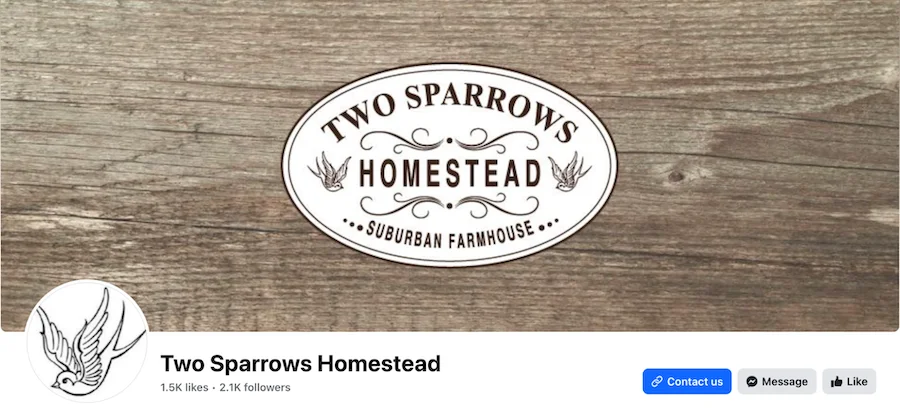
This logo’s old-fashioned, hand-crafted feel leans into the business’s identity as a “suburban farmhouse.”
As an example, if you’re opening a gift shop in a seaside town, how many of your competitors have a blue logo with ocean-related imagery? If you opt to take a different visual path, you stand out immediately from your peers.
3. Start aligning your brand with design elements
Now that you’ve defined what your brand represents, how can you use visual elements to convey that message?
Return to your brand identity discussions. As you think about what your brand represents and what you want your customers to feel, how does that translate into your brand’s visual identity?
A law firm might want its clients to feel safe, confident, and heard. That might mean it wants its visuals to convey trustworthiness and authority?
How can you use design elements like font, color, and graphics to evoke those feelings?
Let’s start with fonts. While there are thousands of individual fonts, they can be broken down into a handful of high-level categories, each of which has its own aesthetic vibe.
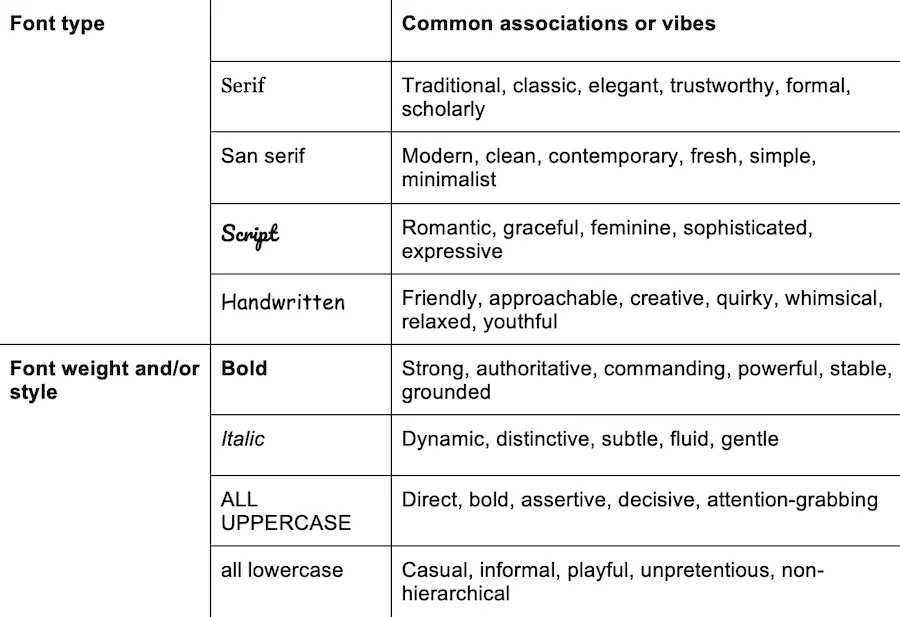
Next, consider color. Different shades, hues, tints, and tones all have the power to awaken specific feelings in viewers. A pastel pink feels gentle and soothing, while a neon pink feels electric and energetic.
Understanding the psychology of color (and how to use it in your logo) can help you spark immediate emotional resonance in anyone who sees it.
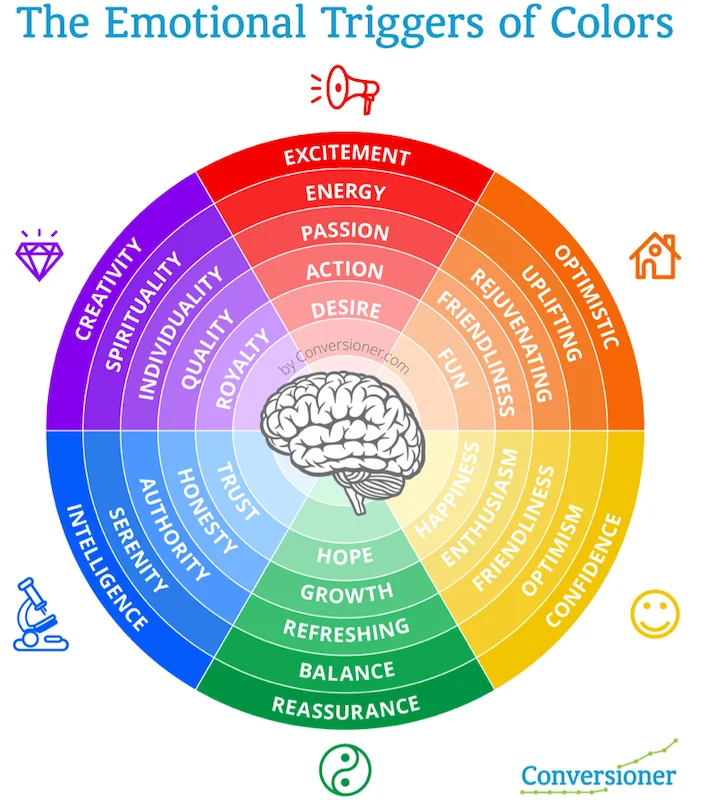
Last up are graphics. Do you want your logo to include an icon, drawing, or image? When considering your options, think again about how the image style ties into your brand identity.
A cartoon might feel whimsical and playful, while an icon can convey a more serious tone. You can also experiment with different degrees of representation in your image.
For example, a yoga studio might opt for a line drawing of a yogi sitting in the lotus position. Or if they wanted to be slightly less representational, they might select an icon of a lotus flower.
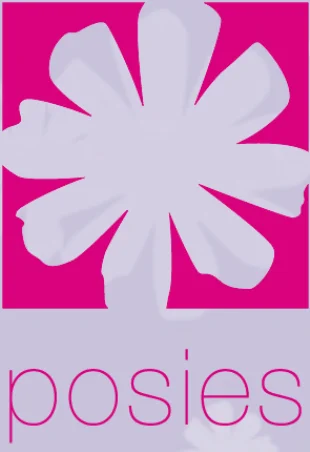
Posies, a local flower shop with bright and modern bouquets, designed a logo in fuchsia with an all-lowercase sans-serif font.
🧠 Speaking of psychology in marketing… Get our free guide >> 26 Brilliant Ways to Use Psychology in Your Copywriting (with Examples)
4. Understand logo types
Your end goal is to bring these parts together to create a unified logo. And to do that, you must understand the types of logos out there
Many brands create several versions of their logo, so knowing your options from the start will help you decide which logo variations to create for your small business.
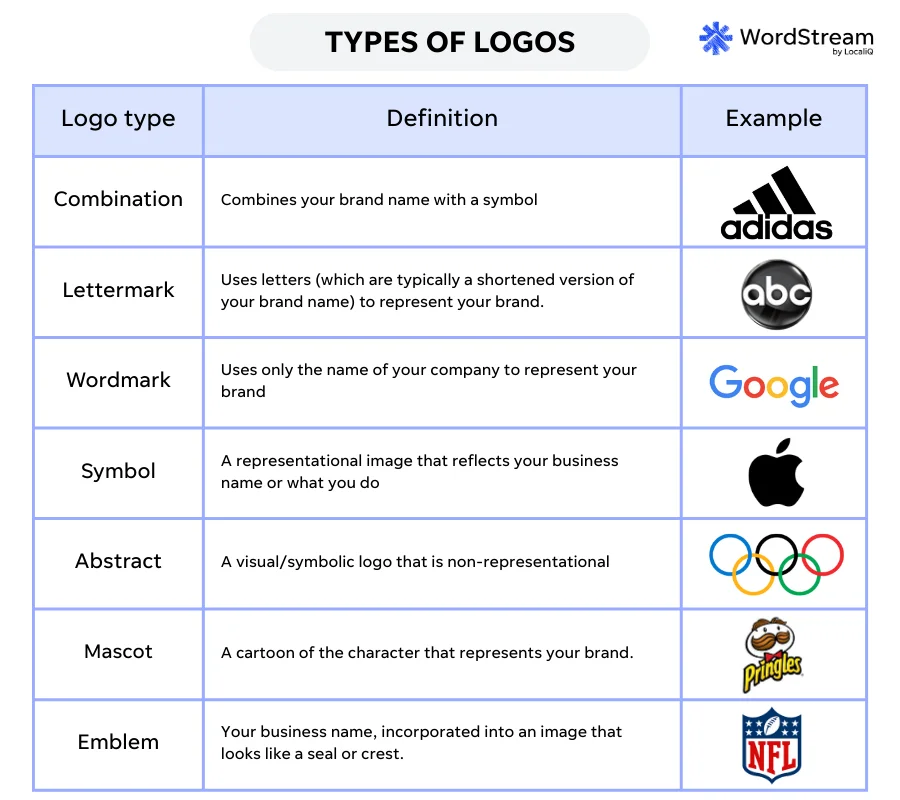
5. Combine elements and create options
Once you’ve decided on a general direction for your logo, you can begin experimenting with colors, fonts, and graphic elements. Or, ask your professional graphic designer to work their magic!
This part can be tricky for those without a professional background in design, but graphic design tools with AI features can help.
For example, Canva now invites users to describe an idea with words and uses AI to present options that suit the brief. The tool allows for back-and-forth, so you can ask Canva to refine its initial output until you’re happy with the results.
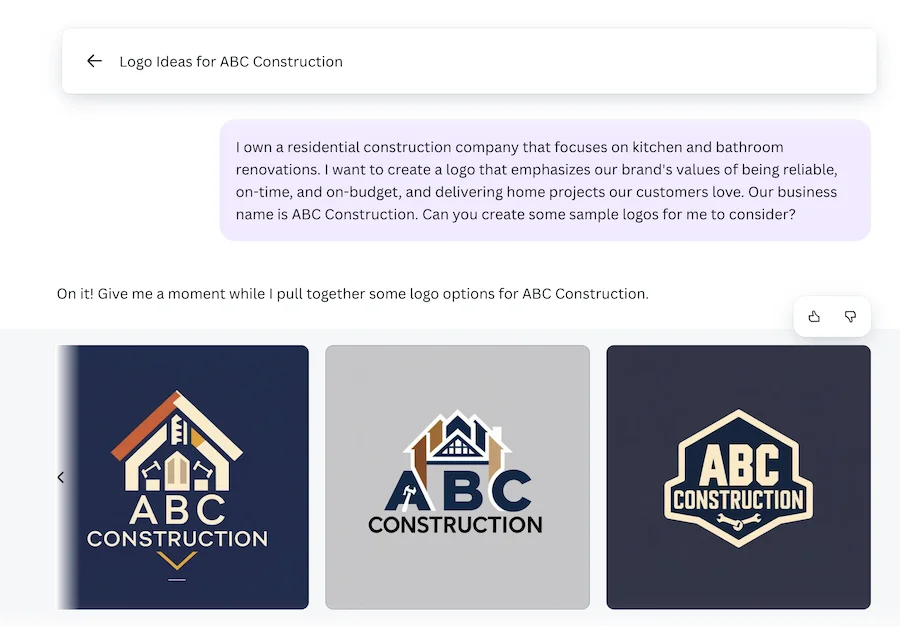
A conversation with Canva AI, asking it to create potential logos for a fictitious residential construction firm.
6. Pick a design and create a set of logos
Most brands will design several variations of their logos for different applications. While the full logo might look great on direct mailers you send to your neighbors, you might opt to use the symbol alone as the profile photo on your Instagram page.
To see how brands use different configurations of their logos, take a well-known brand like Nike.
Sometimes, the logo is just the symbol. Other times, the swoosh appears below the brand name. And in other instances, the swoosh is paired with the famous Nike tagline, “Just do it.”
Eventually, you’ll spell out all potential configurations and rules for using your logo in your brand kit.
Small business logo templates
Canva has premade logo templates you can personalize, or you can use it as inspiration for your mood board. Here are some small business logo templates we love to help you get started.
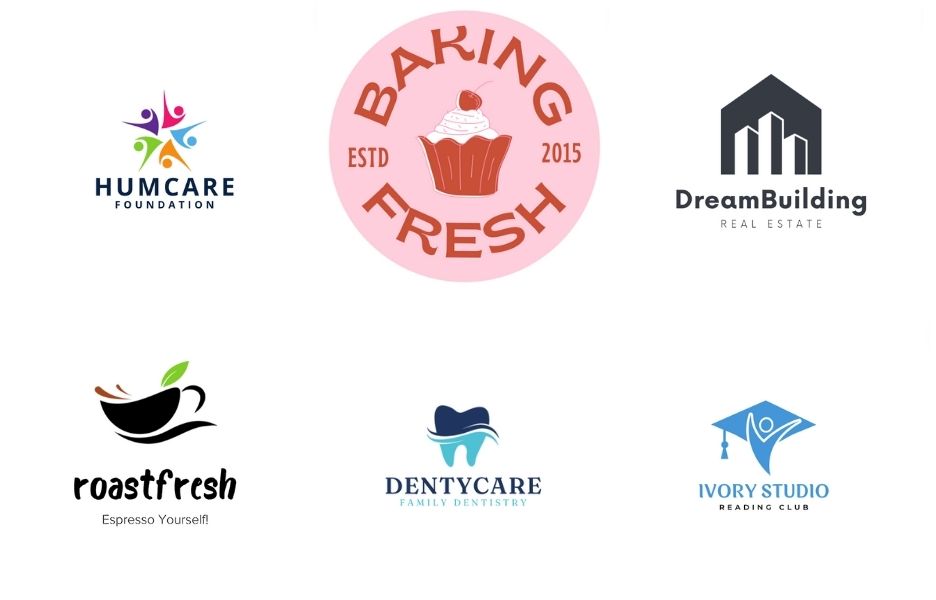
Get these templates and more here!
Designing a small business logo that tells a story
In the end, what matters more than the details is the larger story your small business logo tells.
Do viewers instantly understand what you do? Does your logo make them feel something? Do long-time followers of your brand recognize it from across the room?
These are the true hallmarks of a great small business logo.







